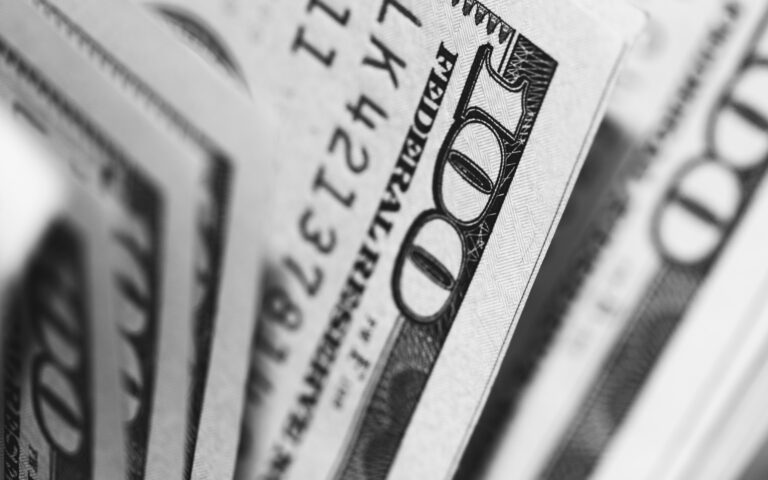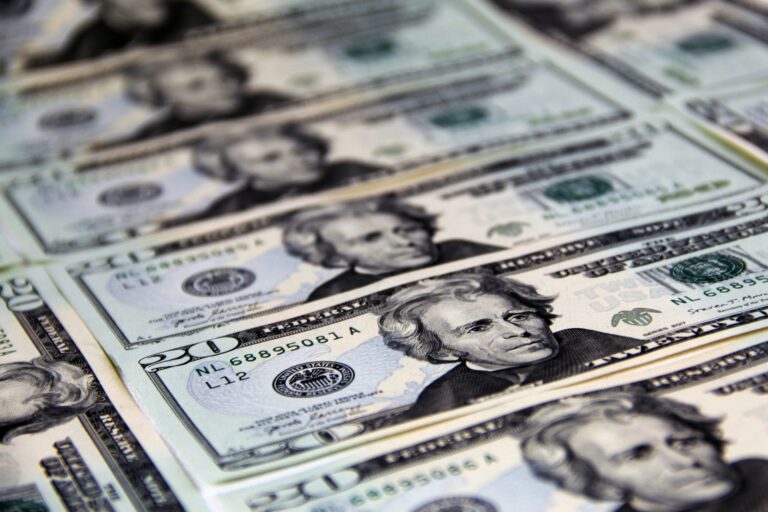
Morning Brief – How low can you go?
With Euro-Dollar at two year highs, the rapid sell-off in the Dollar is in question. The trade weighted Dollar index is flashing oversold suggesting the broad-based USD sell off that has been underway since June could be running out of steam. A direct counter party to many fx trades and involved in some way in yet more, the path of the Dollar has a huge impact upon global markets. With an FOMC meeting staring down the Dollar tomorrow, let’s have a look at the main factors moving USD.
One factor driving the Dollar lower is a byproduct of the States’ response to the pandemic. The US balance sheet has swollen by around 70% thanks to the immense stimulus measures the Federal Reserve undertook at the start of the pandemic. The rapid injection of cash into markets has the effect of diluting the existing pool of currency with the effect of trimming the value of the wider currency. Opening swap lines overseas for Dollar liquidity too is known to devalue a currency on foreign exchange markets – why fund the purchase of Dollars with a currency trade when you can fund directly in USD? This would not have been an unwelcome side effect of the pandemic response. Whilst some of these policies are winding down there is no sign that the excess cash dumped on markets will be unwound any time soon. The persistently accommodating stance of the Fed should continue to weigh on the Dollar.
This huge injection of liquidity across the globe has pushed yields lower in many assets. The value of negative yielding debt is now greater than 15 trillion Dollars. What that means is that there are debt instruments out there approximately the size of the US economy itself that to buy (and therefore lend) will cost you. Within these instruments, if you lend money you will get back less than you initially lent. In an environment where real yields behind the Dollar are deeply negative, the currency loses some of its appeal to greener, less costly grass.
Over the last few decades the relative rate of inflation in the Eurozone and the United States has been a good indicator of EURUSD performance. When US inflation was considerably higher than in the Eurozone, the Dollar tended to outperform the Euro. With the obliteration of inflation in the United States and a surprisingly robust Eurozone economy, the inflation gap is now knocking on the door of 0 for the first time in a decade with inflation in Europe almost as high as it is in the United States. If the last two decades are anything to go by then EURUSD could have some catching up to do.
After seven consecutive days of losses versus the Euro, the Dollar is taking some breathing time around the 1.17 mark with the pair down from its overnight highs. The Dollar is fighting with its support levels from a trade weighted perspective and across G10 currency crosses. Expect choppy conditions as the Dollar decides which side of the line it wants to sit on. If the Dollar does break its support levels expect the sell off to gain new momentum and breakout into a new range. Any move by the Federal Reserve to loosen monetary policy further tomorrow will undoubtedly push the Dollar lower once again.
Discussion and Analysis by Charles Porter

Click Here to Subscribe to the SGM-FX Newsletter
Related Insights

Daily Brief – Weren’t Tariffs USD Negative?
Weren’t Tariffs USD Negative? The Dollar proved sensitive to headlines regarding trade during the US overnight session. However, contrary to what many commentaries would have you believe, as the risk of tariffs escalated the Dollar rose. The 90-day pause following Trump’s April ‘liberation day’ tariffs had been set to expire this coming Wednesday. To the […]

Daily Brief – Dollar Reserves
Dollar Reserves With the passing of Trump’s original deadline for the reimposition of liberation day tariffs yesterday, markets have breathed a sigh of relief. July VIX futures continued to slide lower. Moreover, what may surprise anyone who had been expecting the issue of tariffs to resurface following the passing of Trump’s new deadline, so too […]

Daily Brief – Big Girls Don’t Cry
Big Girls Don’t Cry A bond market tantrum and one of the sharpest one day sell offs in Sterling for several years appear to have been catalysed by the Chancellor’s appearance in PMQs yesterday. First: the back story. This Labour government has faced some embarrassment in recent weeks trying to get its welfare bill through […]



 Charles Porter
Charles Porter